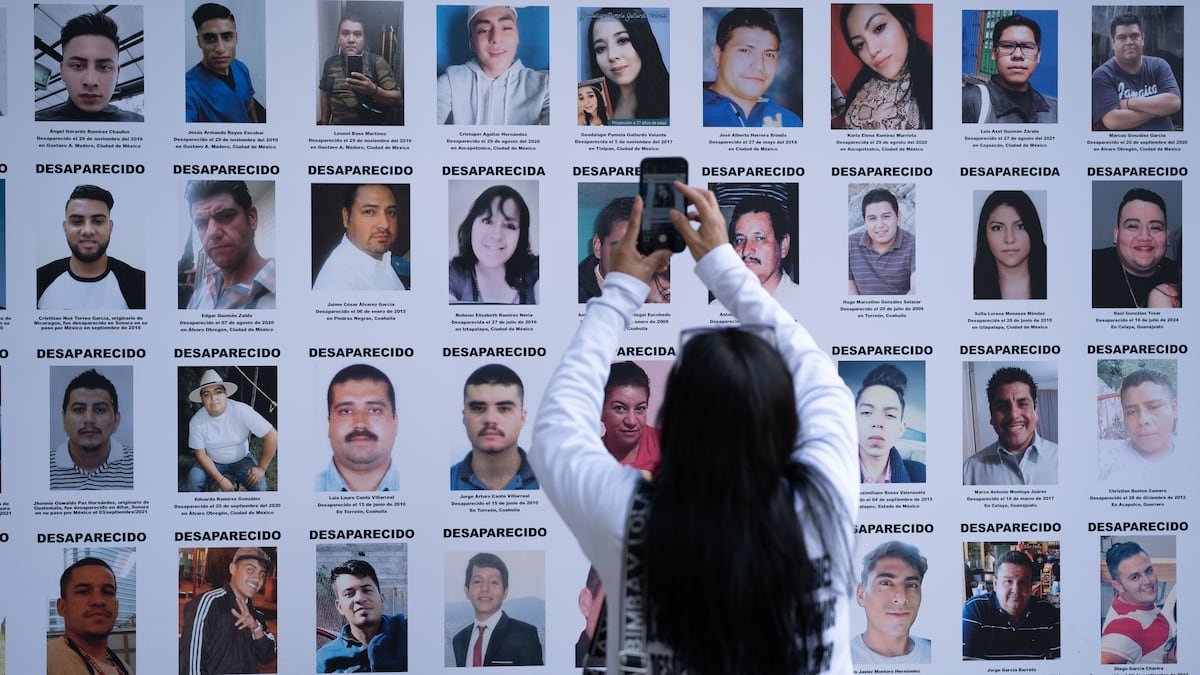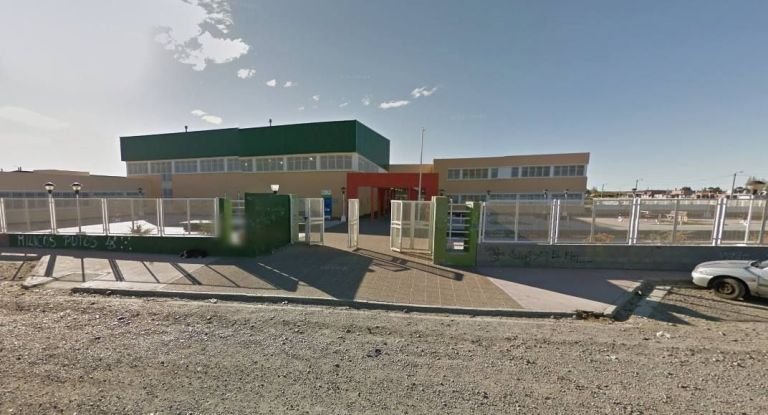“Mass recruitment,” “You’ll be paid during training,” “The four letters of Guadalajara invite you to work”— these are messages from organized crime groups in Mexico, offering jobs. Sometimes subtly, through deception, and on other occasions directly, cartels like “the four letters” — the Jalisco New Generation Cartel (CJNG) — are increasingly using social media to recruit soldiers to join their ranks. The Teuchitlán case, the ranch discovered in March by relatives of people who disappeared in the center of the country, has shed light on this phenomenon, about which little was known until recently.
While investigators work to process the enormous amount of evidence found at the ranch, including clothing, human bones, and the remains of bonfires, the public is questioning how it operated. Relatives of missing persons, who number in the tens of thousands across the country, have reported that there — a ranch in an agricultural area an hour and a quarter from Guadalajara, the country’s second-largest city — an extermination center operated, complete with crematoriums. While waiting for the forensic work to reveal the full extent of the horror, questions arise about the other uses the criminals gave to the site.
As authorities have reported in recent weeks, the CJNG operated a training center at the ranch. The criminal organization, one of the most powerful in the country, which ships huge quantities of fentanyl and methamphetamine to the United States, recruited young people through false job offers, with the goal of forcibly integrating them into its ranks. The alleged mastermind of this operation, arrested in March, whom authorities identify as Commander Lastra, trained “hundreds of individuals” at the ranch. Those who refused or tried to escape were killed, according to the detainee, per the government’s account.
In a report presented at the end of March, federal security czar Omar García Harfuch reported that Commander Lastra managed “a group of collaborators dedicated to the recruitment process through TikTok, where he offered fake job opportunities.” García Harfuch presented a number of accounts dedicated to that goal and stated that 49 recruiters had already been arrested. The details of the operation shocked a country that has suffered the ravages of violence for almost two decades, adding new concerns about the virtual capabilities of crime, a relatively new field for authorities.
Before Teuchitlán, little was known about criminal recruitment through social media. That was the case for Josué Gutiérrez Ríos. In August 2024, Gutiérrez Ríos was 25 years old and had already worked for a long time as a security guard for a private company in the State of Mexico. That summer, a colleague told him about a job opening he’d seen on social media. The pay and the requirements were attractive, although he was never entirely clear about the exact location of the ranch he would be guarding. His sister, Guadalupe Gutiérrez, has said that Josué was initially told he had to present his documents in Guanajuato and then move to his workplace, which was Guadalajara, Jalisco. However, once he left, the last she heard from him was that he had actually arrived in Nayarit. Once in that state, Josué did not respond to her messages.
On October 4 of that same year, while Guadalupe was browsing Facebook posts, trying to find any clues on websites in Nayarit, she came across a photo in which she recognized Josué. It was from a woman’s account, which would later be deleted, in which her brother appeared dead, his face pixelated. In that image, Guadalupe recognized her brother’s clothing: “I doubted for a moment it was him, but I could see his clothes. I went to Nayarit two days later and filed the complaint. They told me they would do everything possible to find him, but the prosecutor’s office and the legal advisor told me they couldn’t go to the area they identified as where he was, because it’s a ‘combat zone.‘”
Stories like this are flooding social media and media outlets across the country, which has revealed how thousands of young people are forcibly recruited into drug trafficking. Following the discovery of the Teuchitlán ranch, companies like Honda in Celaya, Guanajuato, and Big Force in Chilpancingo, Guerrero, have had to publicly deny that they are the ones offering jobs at their facilities. Among their criminal schemes, cartels impersonate well-known companies to lure victims.
In these offers, most of them posted on Facebook pages or TikTok accounts, the supposed recruiters offer salaries much higher than the average. In the case of direct recruitment into the ranks of the CJNG, they claim that the money will gradually increase, that they will be part of a training program — despite being incommunicado at various times — and that they will also have accommodation and a “good environment.” The salaries they show range from 4,500 pesos per week ($220) and more, depending on performance. The minimum wage in Mexico is generally 1,672 pesos per week ($82).

A former police commander in one of the largest cities in Guanajuato, a state at the center of conflict between the CJNG and a local group calling itself the Santa Rosa de Lima Cartel, recalls a case from a few months ago in which criminals “recruited computer engineering graduates or those about to graduate to work for an ‘international company’ that was going to set up shop in Nuevo León and the Guadalajara metropolitan area. What set off the alarm,” he adds, “was that the company wasn’t based in the area, and its job postings weren’t standard,” he says, referring to the salaries offered. “We, through the cyber police, spoke to the company to request information and, above all, to verify if they were recruiting personnel,” he adds. That’s how they were discovered.
The Teuchitlán case and the wave of recruitment stories uncovered recently necessarily challenge the framework of state protection. How can the authorities prevent this type of criminal activity? David Pérez Esparza, part of the Executive Secretariat of the National Public Security System (SESNSP) during the Andrés Manuel López Obrador administration (2018-2024), points to three factors beyond the state. “On the one hand, family censorship, which is not easy. Since it involves adolescents, it is not straightforward. The other has to do with the internal patrolling capabilities of social media, which can be done through artificial intelligence or human labor. But of course, it entails a cost that companies don’t want. And third, state patrolling, which is already done at the C-5,” he says, referring to public video surveillance centers.
The expert points out that the development of public policies on cybersecurity is slow, and generally focused on prevention. “Under López Obrador, a national registry of cyber incidents was created, which sought to allow authorities to receive reports of identity theft, hacking, WhatsApp theft, etc. That was the beginning of the issue. Progress was made, but for this to be meaningful, a cyber police force had to be created,” he notes. “Now there is a general cybersecurity directorate, which reports to the federal government, but a national center should be created to monitor these issues.”
The situation is worrisome. The most recent assessments attest to this. A national analysis on the recruitment of children and adolescents by organized crime groups conducted by the Ministry of the Interior in 2021, but publicly revived after the discovery of the ranch in Teuchitlán, reveals that seven out of 10 recruits at that age grew up in high-crime environments. The report also explains how organized crime groups employ minors, first to work as messengers, and thus to climb a pyramid structure that culminates in the training of hitmen or other positions that involve very high levels of violence.
The analysis also explains that the recruitment methods used are as follows: prior surveillance; selection of the victim and location; the use or absence of threats or weapons; the use of seduction to reach minors and adolescents through video games or deception; in the case of migrants: the retention of their documents; false promises of greater monetary earnings; or fake job offers on social media. According to this document, the states with the highest incidence of this recruitment are Baja California, Colima, Chihuahua, Mexico City, the State of Mexico, Guanajuato, Guerrero, Jalisco, Michoacán, and Morelos.
Employment as day laborers, security guards, drivers, painters, translators — or like one of the young recruitment survivors Pablo’s mother was able to speak with, who had also been hired in Nayarit as a dog sitter — are some of the jobs offered on social media platforms like Facebook, TikTok, and others that seem to be serious and credible when it comes to job opportunities and that have turned out to be a mechanism for scams or criminal recruitment. There are also accounts that directly recruit for drug trafficking groups, such as the 39 TikTok accounts that the Federal Security Secretariat shut down on March 25 after verifying that they were recruiting people to join the Jalisco New Generation Cartel.
The prospect of improved living conditions for people simply seeking better jobs, coupled with the current employment insecurity in Mexico, has become fertile ground for drug trafficking to deceive and recruit more and more young people.
Credits:
Design and layout: Mónica Juárez and Ángel Herdora
Sign up for our weekly newsletter to get more English-language news coverage from EL PAÍS USA Edition











